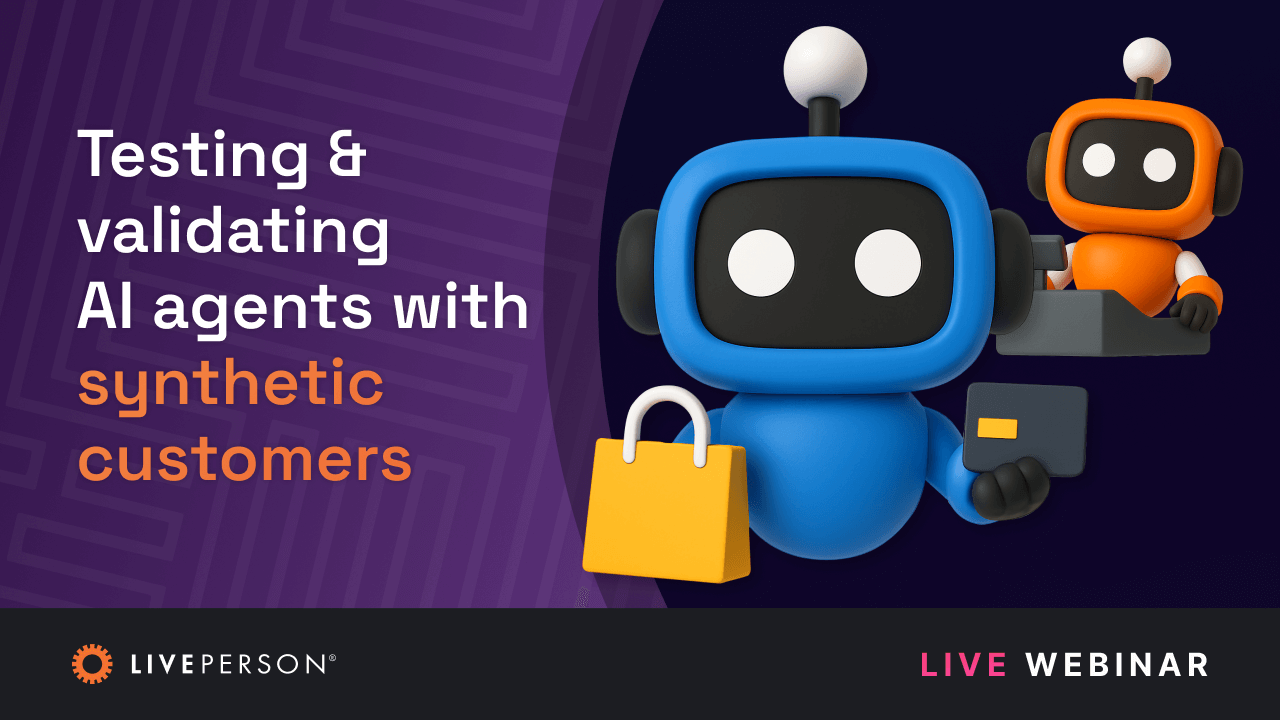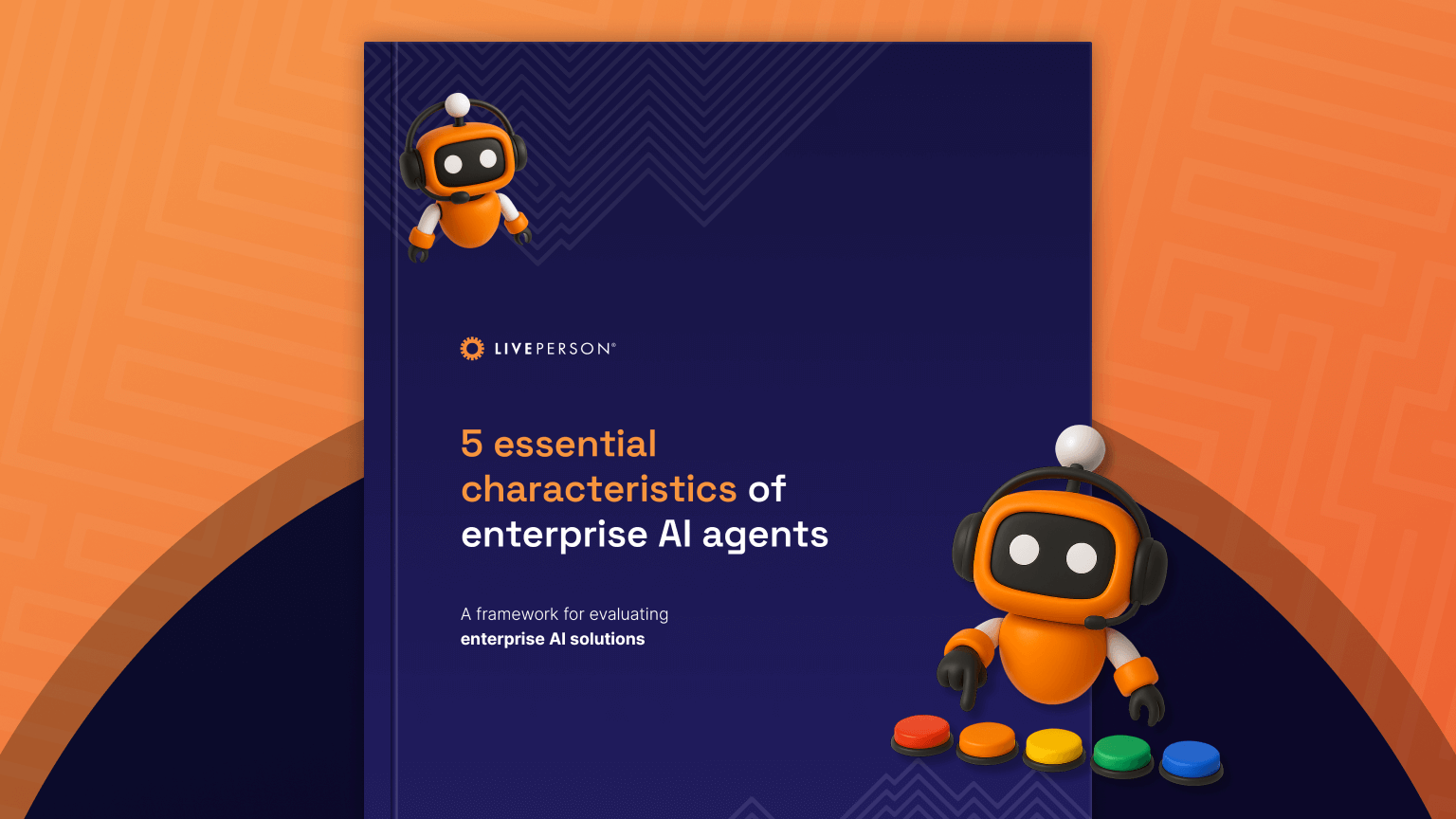article
How synthetic customers became the non-negotiable assurance layer for enterprise AI

Traditional quality assurance wasn’t built for probabilistic AI. Synthetic customer simulation is now the mandatory assurance infrastructure for conversational AI governance, security, and compliance.
The QA paradigm just shifted
For decades, quality assurance in customer experience followed a predictable playbook: build your system, write test scripts, run regression tests, spot-check performance, deploy to production. When something broke, you patched it. When customers complained, you fixed it. QA was fundamentally reactive.
That model worked fine for rules-based systems with deterministic outputs. Apply input A, expect output B every time.
Generative AI shattered that assumption.
Unlike traditional bots that retrieve pre-written responses, GenAI generates novel outputs for every interaction. The same customer query on Monday might produce a perfect answer. The identical query on Tuesday could hallucinate product details, miss compliance requirements, or respond with wildly inappropriate tone. You can’t regression test your way out of probabilistic behavior.
The stakes are higher than ever. One AI hallucination can erode customer trust. One compliance failure can trigger regulatory action. One brand voice deviation can damage reputation built over decades. Yet most enterprises are still using QA approaches designed for an era when systems were predictable.
The gap between how we test AI and how AI actually behaves in production has become a liability. Organizations need a fundamentally different approach to AI assurance.
Why legacy QA can’t protect you from GenAI risk
Manual testing collapses under the weight of generative AI’s complexity. Human testers work business hours, follow predetermined scripts, and can validate maybe dozens of scenarios per day. Meanwhile, AI agents face thousands of unpredictable customer interactions daily, each one potentially exposing the infinite edge cases where GenAI is most likely to hallucinate or breach compliance.
The math doesn’t work. You can’t manually test enough scenarios to catch the failures that matter.
Legacy QA assumes consistent outputs for consistent inputs, but GenAI is probabilistic by design. The model that passed all your tests last week might drift toward policy violations this week as it encounters new conversation patterns. Manual testing operates at a scale where human QA inevitably fails, discovering problems only after customers experience them.
Then there’s the infinite edge case problem. Customer conversations don’t follow scripts. They involve complex, multi-turn interactions where context shifts, emotions escalate, and unexpected topics emerge. A customer might start asking about a product return, pivot to a complaint about service quality, then request account information that triggers compliance requirements. Your test cases can’t anticipate every permutation.
Perhaps most critically, you can’t safely test the scenarios that pose the highest risk. You can’t put real customers through fraud attempt simulations. You can’t use actual customer data to train agents on hostile interactions. You can’t validate how your AI handles regulatory edge cases without potentially violating the very policies you’re trying to protect.
The result is predictable: many organizations discover their AI’s real limitations only in production, when the damage has already occurred.
With regulations like the EU AI Act imposing €35 million fines for non-compliance, enterprises need systematic validation before deployment.
Simulation as adversarial red-teaming for conversational AI
I see this every week in conversations with Fortune 100 leaders: Those who invest in verifiable, t
Leading enterprises are making a fundamental shift. They’re treating AI assurance the way cybersecurity teams treat network protection: as an adversarial testing environment that probes for vulnerabilities before attackers do.
This is where synthetic customers change the equation.
Conversation Simulator generates thousands of realistic, autonomous customer interactions that stress-test AI systems in ways manual QA never could. These aren’t simple scripted exchanges. They’re multi-turn conversations with distinct personas, emotional tones, and adversarial intent designed to expose the exact failure modes that legacy testing misses.
Think of it as penetration testing for conversational AI. Just as security teams run vulnerability scans against their infrastructure, synthetic customers probe AI systems for compliance failures, hallucinations, policy drift, and brand voice deviations.
The platform can simulate the hostile customer who tries to manipulate the AI into revealing sensitive information. The detail-oriented researcher who asks follow-up questions that expose knowledge gaps. The frustrated caller whose emotional escalation tests whether your AI maintains appropriate empathy. The regulatory edge case that most AI systems would handle incorrectly.
And it does this at scale. Up to 100 parallel conversations simultaneously, generating comprehensive test coverage that would take human QA teams months to achieve manually.
Unlike legacy tools built for deterministic systems, Conversation Simulator is designed specifically for the probabilistic, generative nature of modern AI. It doesn’t just check whether responses match expected outputs. It validates whether AI behavior stays within guardrails across thousands of unpredictable interaction paths.
This transforms AI governance from reactive patching to proactive protection.
Eliminating the test in production trap
Here’s the uncomfortable truth about most GenAI deployments: organizations are essentially testing in production because they have no safe alternative.
Traditional testing can’t validate fraud scenario handling with real customers. You can’t use actual customer data to test privacy compliance without creating the very risks you’re trying to prevent. Most organizations deploy cautiously, with extensive human oversight and limited scope, hoping nothing goes catastrophically wrong while they learn what their AI can and cannot handle safely.
Synthetic customers eliminate this impossible trade-off. Built on LivePerson’s unique conversational data heritage, enterprise-grade synthetic data creates a risk-free laboratory for exactly the conversations you can’t afford to get wrong—enabling safe testing of fraud, abuse, and sensitive regulatory scenarios without exposing customers or using protected information.
This de-risks deployment and dramatically accelerates time-to-market.
| Industry | High-risk testing scenarios |
| Financial services | Fraud attempts, dispute escalations, regulatory disclosures – without exposing real customers or triggering false alerts |
| Healthcare | HIPAA compliance validation across complex appointment scheduling – without using protected health information |
| Retail | Angry customer escalations, return policy exceptions – without actually making those exceptions in production |
The result is AI deployment with confidence, not crossed fingers. Organizations can validate performance across high-risk scenarios before any customer interaction occurs, dramatically reducing the expensive post-launch escalations that plague most GenAI rollouts
Where AI testing and validation become non-negotiable
Conversation Simulator delivers value across multiple use cases, but three stand out as critical for enterprise AI governance.
- Risk mitigation and compliance assurance delivers the highest value in regulated environments. Financial services firms validate fraud handling and regulatory disclosures. Healthcare providers test HIPAA-sensitive appointment scenarios. Retail brands ensure policy consistency under pressure.
This systematic validation helps organizations meet regulatory standards like GDPR, HIPAA, and PCI-DSS—averting potential $10M+ remediation costs and brand damage from compliance failures.
- Operational quality assurance moves AI governance beyond pre-launch testing. Synthetic customers act as secret shoppers, proactively identifying policy drift, broken flows, outdated policies, tone inconsistencies, and poor routing logic. This catches problems before real customers encounter them and before brand damage occurs, reducing agent escalations and eliminating wasted time fixing bugs in production.
Pre-deployment validation accelerates innovation while maintaining safety. Teams can stress-test new GenAI features, prompt changes, or LLM swaps against thousands of scenarios in hours rather than weeks. Organizations see up to an estimated 60% reduction in bot testing time while uncovering more edge cases than manual QA ever could. This validates performance under realistic load and catches failure modes that traditional testing would miss, enabling faster time-to-value without increased risk.
The new standard for AI assurance
AI testing and validation for conversational AI isn’t just about quality anymore. It’s about security, governance, and risk mitigation. It’s infrastructure, not an afterthought.
Organizations deploying GenAI without comprehensive simulation are flying blind. They’re hoping their training was sufficient, their test cases were comprehensive enough, and their guardrails will hold under real-world pressure.
But hope isn’t a strategy.
The enterprises treating simulation as foundational infrastructure will be the ones that scale AI safely and confidently. They’ll deploy faster because they’ve validated performance before launch, cutting bot testing cycles by more than half. They’ll operate more efficiently because they’ve eliminated costly post-deployment firefighting. They’ll build customer trust more effectively because their AI consistently delivers reliable, compliant, on-brand experiences.
Traditional QA asks whether your AI works. Simulation proves your AI is ready for the unpredictability, complexity, and high stakes of real customer conversations.
That’s not just better testing. It’s a completely different approach to AI assurance.Ready to see how Conversation Simulator protects your brand before your AI goes live? Modern AI governance starts with simulation, not supervision.
Ready to see how Conversation Simulator protects your brand before your AI goes live? Modern AI governance starts with simulation, not supervision.
Learn how leading enterprises are scaling AI with confidence, not just capability.



